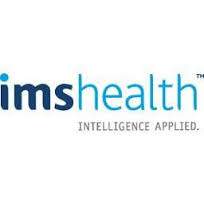IMS Health Finds Global Cancer Drug Spending Crossed $100 Billion Threshold in 2014

Earlier diagnosis, longer treatment duration and increased effectiveness of drug therapies are contributing to rising levels of spending on medicines for cancer care. According to a new report released by the IMS Institute for Healthcare Informatics, total global spending on oncology medicines — including therapeutic treatments and supportive care — reached the $100 billion threshold in 2014, even as the share of total medicine spending of oncologics increased only modestly.
Growth in global spending on cancer drugs — measured using ex-manufacturer prices and not reflecting off-invoice discounts, rebates or patient access programs — increased at a compound annual growth rate (CAGR) of 6.5% on a constant-dollar basis during the past 5 years. Oncology spending remains concentrated among the US and five largest European countries, which together account for 66% of the total market, while the rising prevalence of cancer and greater patient access to treatments in pharmerging nations continues to grow and now accounts for 13% of the market.
The study — Developments in Cancer Treatments, Market Dynamics, Patient Access and Value: Global Oncology Trend Report — is a comprehensive review and updated perspective on the current and future clinical landscape, marketplace dynamics for oncology-related pharmaceuticals, and patient access to medicines and their value.
Targeted therapies have dramatically increased their share of the total global oncology spend, rising 14.6% CAGR during the past 5 years with steady increases across all regions. At the same time, payers and national health systems have intensified their scrutiny of the value of these medicines relative to their incremental benefits over existing treatments, with cost effectiveness assessments frequently resulting in limited patient access to these drugs. Access and reimbursement issues are likely to become more complicated in coming years as individual and combination oncology medicines address multiple cancer types and patient populations with varying dosage and clinical value.
“The increased prevalence of most cancers, earlier treatment initiation, new medicines and improved outcomes are all contributing to the greater demand for oncology therapeutics around the world,” said Murray Aitken, IMS Health senior vice president and executive director of the IMS Institute for Healthcare Informatics. “Innovative therapeutic classes, combination therapies and the use of biomarkers will change the landscape over the next several years, holding out the promise of substantial improvements in survival with lower toxicity for cancer patients.”
The report’s key findings include the following:
• Global oncology market continues to experience steady growth.
• Clinical outcomes are improving for major cancers.
• Patient access to cancer drugs varies across all markets.
• Patients are engaging social media and online networks throughout their cancer journey.
The full version of the report, including a detailed description of the methodology, is available at www.theimsinstitute.org.
Related News
-
News Patients vs Pharma – who will the Inflation Reduction Act affect the most?
The Inflation Reduction Act brought in by the Biden administration in 2022 aims to give better and more equitable access to healthcare in the USA. However, pharma companies are now concerned about the other potential costs of such legislation. -
News CPHI Podcast Series: What does the changing US Pharma market mean for industry and patients alike?
In this week's episode of the CPHI Podcast Series Lucy Chard, Digital Editor for CPHI Online is joined by James Manser to discuss the political and market changes in the US pharma field. -
News CPHI Barcelona Annual Report illuminates industry trends for 2024
The CPHI Annual Survey comes into it’s 7th year to report on the predicted trends for 2024. Over 250 pharma executives were asked 35 questions, with their answers informing the industry landscape for the next year, spanning all major pharma marke... -
News Which 10 drugs are open to price negotiation with Medicare in the USA?
The Centres for Medicare & Medicaid Services, under the Biden administration in the USA, has released a list of the 10 drugs that will be open to price negotiations as part of the new legislation under the Inflation Reduction Act (IRA). -
News EU Medical Devices Regulation causes unintended disappearances of medical devices for children, doctors state
Doctor groups and associations have appealed to the EU to correct the EU Medical Devices Regulation law that may cause unintended shortages of essential drug and medical devices for children and rare disease patients. -
News 10 Major Drug Approvals So Far in 2023
Last year, 37 novel drugs were approved by the FDA, this was a high number for such a category, and covered many fields including oncology, demonstrating how promising further research is, and how it is only continuing to build. To date, there are alre... -
News Detecting Alzheimer's disease with a simple lateral flow test
A novel rapid diagnostic test for early-stage Alzheimer's disease has been developed using a biomarker binder from Aptamer Group along with technology from Neuro-Bio, the neurodegenerative disease experts. -
News CPHI Podcast Series: outsourcing and manufacturing trends
Listen to the CPHI Podcast Series this June to hear Gil Roth of the PBOA speak with Digital Editor Lucy Chard about the biggest trends and topics to watch in pharma outsourcing and manufacturing at the minute.
Position your company at the heart of the global Pharma industry with a CPHI Online membership
-
Your products and solutions visible to thousands of visitors within the largest Pharma marketplace
-
Generate high-quality, engaged leads for your business, all year round
-
Promote your business as the industry’s thought-leader by hosting your reports, brochures and videos within your profile
-
Your company’s profile boosted at all participating CPHI events
-
An easy-to-use platform with a detailed dashboard showing your leads and performance







